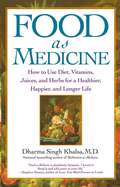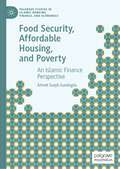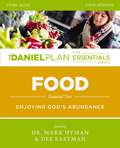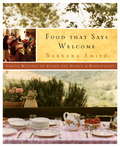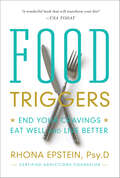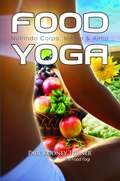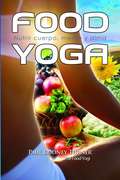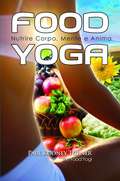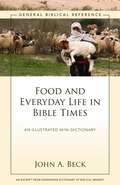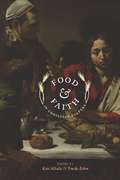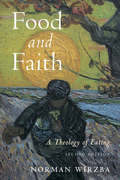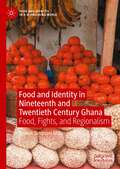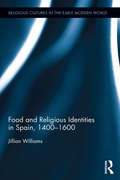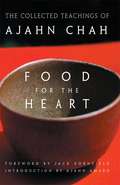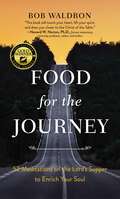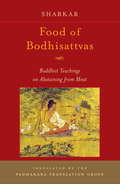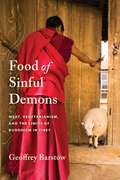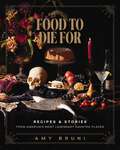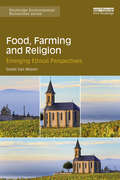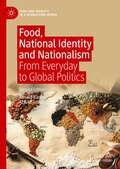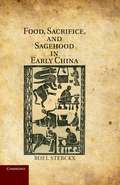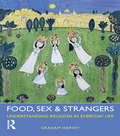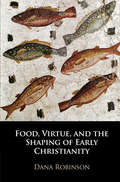- Table View
- List View
Fond Memories, Fresh Beginnings (Tales From Grace Chapel Inn #32)
by Sunni JeffersThe Howard sisters are very busy as the year moves from late summer into fall. Some long-term guests have settled into the inn, including a young family driven from their home by fire and a retired missionary seeking new direction. Add to that mix a stray dog, an ailing educator and a grade-school play, and the result is an unusual yet wonderful testimony to the fact that God has a plan for everyone. Once you visit the charming village of Acorn Hill, tucked away in rural Pennsylvania, you'll never want to leave. Townsfolk relax on their porch swings or gather to discuss the day's events at the Coffee Shop over homemade pie. It's the kind of town where friendship and faith flow together like a wide river on a fine spring day. And you'll love spending time with the Howard sisters, who have begun a new life together in their childhood home, a gracious Victorian house that is now a bed-and-breakfast called Grace Chapel Inn. Here they rekindle old memories, rediscover the bonds of sisterhood, revel in the blessings of friendship and meet many fascinating guests along the way.
Food As Medicine: How to Use Diet, Vitamins, Juices, and Herbs for a
by Guru Dharma KhalsaA holistic approach to healing through making smart food choices by health guru Dr. Dharma Singh Khalsa that combines spiritual advice and integrative medicine to provide healthful recipes and nutrition plans targeting common and chronic illnesses for a longer, healthier, natural life.Did you know that blueberries can increase brain longevity? That kiwi fruit can be an excellent weapon for battling cancer and heart disease? That pears can help prevent fibroid tumors? From the bestselling author of Meditation as Medicine, comes a remarkable book that helps you achieve maximum health by eating well. Grounded in science, Food as Medicine is a pragmatic and accessible reference that sets readers on the right nutritional path. Dr. Khalsa then explains how to use natural organic juices and foods as medicine, and how food can help reverse the progress or diminish the symptoms of certain diseases, such as Alzheimer's and Hepatitis C. Drawing on patient case histories, Food as Medicine outlines the seven principles of "The Khalsa Plan" for healthy eating, details ailment-specific nutritional plans, and lays out dozens of delicious recipes that promote overall well-being. After all, food is not only the original medicine -- it's the best medicine.
Food Security, Affordable Housing, and Poverty: An Islamic Finance Perspective (Palgrave Studies in Islamic Banking, Finance, and Economics)
by Ahmet Suayb GundogduThis book is the product of an attempt to look differently at the issue of poverty, along with food security and affordable housing. There is a tendency in conventional economics and finance literature to be apologetic when dealing with globally prevailing and unfair economic and financial systems. Islamic economics and finance academia is not immune from this tendency. The book aims to raise awareness about the root causes and suggests novel proposals that will lead to sustainable solutions. It is based on the understanding that if we continue doing more of the same things, we cannot expect to produce different results. This book is also premised on the understanding that the financial sector can promote economic progress only if it channels capital to the most productive use while avoiding moral hazard and adverse selection. The issue of collateral taking promotes a situation where financial institutions prefer to lend only too big-to-fail structures for shelter and food sectors that fuel poverty and inequality. This adverse selection ultimately gives rise to food security and affordable housing issues. This indicates that financial liberalization is not the solution to dealing with poverty and inequality. Instead, strong policy initiatives and financial regulations to direct capital to provide long-term sustainability are needed.
Food Study Guide: Enjoying God's Abundance (The Daniel Plan Essentials Series)
by Dee Eastman Dr. Mark HymanIn this four-session video-based Bible study (DVD/digital video sold separately), The Daniel Plan team explores both the spiritual and the health benefits of following a healthy lifestyle by focusing on the second essential of The Daniel Plan: Food.The sessions include:Learning to Live AbundantlyJumpstart Your HealthCravings, Comfort Food, and ChoicesDesigning Your Eating LifeEach session will highlight testimony from those who have incorporated The Daniel Plan into their everyday lifestyle, plus tips on getting started and medically based information on maintaining a healthy lifestyle by following The Daniel Plan. Each of the other DVD/Study Guides will focus on another essential: Faith, Fitness, Focus, and Friends.Designed for use with the Food Video Study (sold separately).
Food That Says Welcome
by Barbara SmithMake Your Friends and Family Feel Welcome, One Meal at a Time."Welcome to my home as we share life and laughter around the table. It means sharing my life in such a way that there is always room for one more."-Barbara SmithSome people naturally have the gift of hospitality, instinctively creating inviting, mouth-watering meals and a warm environment that assures guests, "We're glad you're here." Fortunately, says food expert Barbara Smith, the rest of us have the same potential to make guests feel nurtured, and here she offers an unforgettable, not-to-be-missed treasury of recipes, tips, and how-to's for everyone with the spiritual gift of hospitality-and for all the rest of us who want to look like we do. In Food That Says Welcome you'll learn to:* Make "welcome" food that is healthy and easy to prepare.* Create an atmosphere that says to your guests, "You are special."* Make hospitality your ministry and service.The mother of Grammy Award winner Michael W. Smith, Barbara has cooked for and entertained numerous celebrities-extending to them the same warmth and exuberance as to her large family. Learn what makes Barbara Smith's meals and outreach so rave-worthy and discover how you can invoke the same spirit of hospitality in your own home and kitchen in Food That Says Welcome. From the Trade Paperback edition.
Food Triggers: End Your Cravings, Eat Well and Live Better
by Rhona EpsteinOperation First Novel 2013 contest winner, Prime of Life was released in Kindle edition only and has garnered in excess of 175 positive reviews with over 6,000 paid downloads.
Food Yoga: Nahrung für Körper, Geist & Seele
by Paul Rodney TurnerDer Autor Paul Rodney Turner, der "Food Yogi", nimmt Sie mit auf eine Reise der Wiederentdeckung des Essens und seiner Bedeutung für unsere spirituelle Entwicklung. FOOD YOGA bietet nicht nur praktische Anleitungen für ein gesundes und glückliches Leben durch Wiederverbindung mit der Natur, sondern führt den Leser auch in die Kraft des Essens als Einheit und Medium ein, um unsere Liebe zum Göttlichen auszudrücken. Food Yoga entspringt dem Glauben, dass die Art der Nahrung, die wir essen, unser Bewusstsein und nachfolgende Verhaltensweisen beeinflusst. Alle großen spirituellen Traditionen der Welt haben ausgefeilte Essensrituale, die sorgfältig darauf ausgelegt sind, das Bewusstsein zu erweitern, und alle verwenden Essen als Mittel, um das Göttliche darzustellen oder ihm zu gefallen und das Bewusstsein ihrer Anhänger zu erweitern. Food Yoga ist im Wesentlichen eine Disziplin, die alle spirituellen Pfade ehrt, indem sie ihre Kernlehre aufgreift - dass Essen in seiner reinsten Form göttlich ist und daher ein ausgezeichnetes Medium für die spirituelle Reinigung ist.
Food Yoga: Nutrindo Corpo, Mente & Alma
by Paul Rodney Turner- Aprenda como tornar o alimento parte de sua jornada espiritual - Assuma o controle de sua mesa de jantar - Aprenda as antigas práticas yoga para dominar os sentidos - Obtenha um guia prático para a saúde do corpo, da mente e da alma - Aprenda sobre a sagrada geometria dos alimentos FOOD YOGA não apenas oferece um guia prático de como levar uma vida saudável e feliz ao se reconectar com a natureza, mas também introduz o leitor ao poder do alimento como unificador e como forma de expressar o seu amor ao Divino. Food yoga é baseado na crença de que o tipo de alimento que comemos afeta nossa consciência e nossos comportamentos subsequentes. Todas as grandes tradições espirituais do mundo possuem elaborados rituais de oferta de alimentos, cuidadosamente planejados para expandir a consciência, e todos utilizam o alimento como uma forma de representar ou agradecer ao Divino e expandir a consciência de seus seguidores. Food yoga é, em essência, uma disciplina que honra todos os caminhos espirituais ao abraçar seu ensinamento fundamental - que o alimento em sua mais pura forma é divino e, portanto, um excelente meio de purificação espiritual.
Food Yoga: Nutrir su Cuerpo, Mente y Alma
by Paul Rodney TurnerCómo nutrir su cuerpo, mente y alma Yoga de Alimentos - Aprenda a hacer que la comida sea parte de su viaje espiritual - Retome el control de su mesa - Aprenda la antigua práctica de yoga de dominar los sentidos - Obtenga orientación práctica para conseguir un cuerpo, mente y alma saludables - Aprenda sobre la geometría sagrada de los alimentos. FOOD YOGA no solo ofrece una guía práctica sobre cómo vivir una vida sana y feliz al reconectarse con la naturaleza, sino que también presenta al lector el poder de la comida como unificador y medio para expresar nuestro amor por lo divino. El yoga de la comida surge de la creencia de que el tipo de alimento que comemos afecta nuestra conciencia y comportamientos posteriores. Todas las grandes tradiciones espirituales del mundo tienen rituales elaborados que ofrecen alimentos cuidadosamente diseñados para expandir la conciencia y todos usan la comida como un medio para representar o complacer a lo Divino y para expandir la conciencia de sus seguidores. El yoga de la comida es, en esencia, una disciplina que honra todos los caminos espirituales al abrazar su enseñanza central: que el alimento en su forma más pura es divino y, por lo tanto, un medio excelente para la purificación espiritual.
Food Yoga: Nutrire Corpo, Mente e Anima
by Paul Rodney TurnerProprio come gli esseri umani, anche gli animali provano dolore. Certo, non avranno il tipo di intelligenza necessario per costruire un grattacielo, ma sono dotati di intelligenza e provano emozioni, sono vivi, respirano e sono esseri senzienti proprio come lo siamo noi. Infatti, tutte le creature, dagli insetti alle piante, ai microorganismi marini, agli innumerevoli organismi unicellulari che esistono in ogni dove, hanno uno scopo ben preciso. Il collegamento è il motore della vita. Tutto è interconnesso. Niente è veramente autosufficiente. Così come acqua ed aria sono inseparabili, così lo è l’interdipendenza di tutti gli esseri venti. Siamo tutti uniti nella vita per la nostra sopravvivenza sulla Terra. La condivisione è tutto. La consapevolezza dell’unità che incorpora tutte le forme di vita è il fondamento di una società veramente umana. Il documentario HOME[1] lo riassume in questo modo: “La Terra si basa su un equilibrio in cui ogni essere vivente ha un ruolo da svolgere, ed esiste solo grazie all’esistenza di un altro essere vivente – un’impercettibile e fragile armonia che è facilmente compromessa.” L’accettazione di questa interdipendenza e il bisogno di equilibrio e gratitudine costituiscono l’essenza stessa del FOOD YOGA. Il nostro viaggio comincia nell’ambito della scienza molecolare e della fisica quantistica e stabilisce il fatto che il cibo, come tutto in questo mondo, sia essenzialmente solo un’altra forma di energia. Ciononostante, questa consapevolezza spesso sfugge a noi esseri umani o perché siamo troppo occupati a consumare cibo per preoccuparcene; o perché siamo privi dell’acuta percezione sensoriale necessaria per accorgercene; il che si traduce in una quasi inesistente percezione dello spettro elettromagnetico. Così come il cibo, anche i nostri pensieri sono una forma di energia, e possono quindi influenzare il cibo che consumiamo, nello
Food and Everyday Life in Bible Times: A Zondervan Digital Short
by John A. BeckDerived from the Zondervan Dictionary of Biblical Imagery, this digital short contains dozens of illustrated entries on aspects of everyday life in Bible times—covering everything from food and housing to tools and transportation. Useful for better understanding the cultural context of Scripture passages and fascinating in its own right, this handy reference tool will find a place in the digital shelves of Bible students and teachers alike.
Food and Faith in Christian Culture (Arts and Traditions of the Table: Perspectives on Culinary History)
by Ken Albala Trudy EdenWithout a uniform dietary code, Christians around the world used food in strikingly different ways, developing widely divergent practices that spread, nurtured, and strengthened their religious beliefs and communities. Featuring never-before published essays, this anthology follows the intersection of food and faith from the fourteenth to the twenty-first century, charting the complex relationship among religious eating habits and politics, culture, and social structure.Theoretically rich and full of engaging portraits, essays consider the rise of food buying and consumerism in the fourteenth century, the Reformation ideology of fasting and its resulting sanctions against sumptuous eating, the gender and racial politics of sacramental food production in colonial America, and the struggle to define "enlightened" Lenten dietary restrictions in early modern France. Essays on the nineteenth century explore the religious implications of wheat growing and breadmaking among New Zealand's Maori population and the revival of the Agape meal, or love feast, among American brethren in Christ Church. Twentieth-century topics include the metaphysical significance of vegetarianism, the function of diet in Greek Orthodoxy, American Christian weight loss programs, and the practice of silent eating rituals among English Benedictine monks. Two introductory essays detail the key themes tying these essays together and survey food's role in developing and disseminating the teachings of Christianity, not to mention providing a tangible experience of faith.
Food and Faith: A Theology of Eating
by Norman WirzbaThis book provides a comprehensive theological framework for assessing the significance of eating. Drawing on diverse theological, philosophical, and anthropological insights, it offers fresh ways to evaluate food production and consumption practices as they are being worked out in today's industrial food economy. Unlike books that focus primarily on vegetarianism and hunger-related concerns, this book broadens the scope of consideration to include the sacramental character of eating, the deep significance of hospitality, the meaning of death and sacrifice, the Eucharist as the place of inspiration and orientation, the importance of saying grace, and the possibility of eating in heaven. Throughout, eating is presented as a way of enacting fidelity between persons, between people and fellow creatures, and between people and Earth. Food and Faith demonstrates that eating is of profound economic, moral, and spiritual significance. Revised throughout, this edition includes a new introduction and two chapters, as well as updated bibliography. The additions add significantly to the core idea of creaturely membership and hospitality through discussion of the microbiome revolution in science, and the daunting challenge of the Anthropocene.
Food and Identity in Nineteenth and Twentieth Century Ghana: Food, Fights, and Regionalism (Food and Identity in a Globalising World)
by Brandi Simpson MillerThis book investigates how cooking, eating, and identity are connected to the local micro-climates in each of Ghana’s major eco-culinary zones. The work is based on several years of researching Ghanaian culinary history and cuisine, including field work, archival research, and interdisciplinary investigation. The political economy of Ghana is used as an analytical framework with which to investigate the following questions: How are traditional food production structures in Ghana coping with global capitalist production, distribution, and consumption? How do land, climate, and weather structure or provide the foundation for food consumption and how does that affect the separate traditional and capitalist production sectors? Despite the post WWII food fight that launched Ghana’s bid for independence from the British empire, Ghana’s story demonstrates the centrality of local foods and cooking to its national character. The cultural weight of regional traditional foods, their power to satisfy, and the overall collective social emphasis on the ‘proper’ meal, have persisted in Ghana, irrespective of centuries of trade with Europeans. This book will be of interest to scholars in food studies, comparative studies, and African studies, and is sure to capture the interest of students in new ways.
Food and Religious Identities in Spain, 1400-1600 (Religious Cultures in the Early Modern World)
by Jillian WilliamsIn the late fourteenth century, the Iberian Peninsula was home to three major religions which coexisted in relative peace. Over the next two centuries, various political and social factors changed the face of Iberia dramatically. This book examines this period of dynamic change in Iberian history through the lens of food and its relationship to religious identity. It also provides a basis for further study of the connection between food and identities of all types. This study explores the role of food as an expression of religious identity made evident in things like fasting, feasting, ingredient choices, preparation methods and commensal relations. It considers the role of food in the formation and redefinition of religious identities throughout this period and its significance in the maintenance of ideological and physical boundaries between faiths. This is an insightful and unique look into inter-religious dynamics. It will therefore be of great interest to scholars of religious studies, early modern European history and food studies.
Food for the Heart
by Jack Kornfield Ajahn Amaro Ajahn ChahRenowned for the beauty and simplicity of his teachings, Ajahn Chah was Thailand's best-known meditation teacher. His charisma and wisdom influenced many American and European seekers, and helped shape the American Vipassana community. This collection brings together for the first time Ajahn Chah's most powerful teachings, including those on meditation, liberation from suffering, calming the mind, enlightenment and the 'living dhamma'. Most of these talks have previously only been available in limited, private editions and the publication of Food for the Heart therefore represents a momentous occasion: the hugely increased accessibility of his words and wisdom. Western teachers such as Ram Dass and Jack Kornfield have extolled Chah's teachings for years and now readers can experience them directly in this book.
Food for the Journey: 52 Meditations on the Lord's Supper to Enrich Your Soul
by Bob Waldron"A beautifully reflective book--an allegorical, poetic masterpiece about communion that will enrich the life of the Christian whether a new or seasoned follower. A gem of a read that can be read, re-read, and shared with loved ones." -- Nonfiction Authors AssociationNo matter where you are on your walk with God, this award-winning devotional on the Lord's Supper will:Draw you closer to the heart of GodMake Communion more meaningfulEnrich your experience with ChristIncrease your sense of the sacredProvide strength for your journey.More than wine and bread, Communion is an oasis, a sacred time spent with Jesus at the Table.Written conversationally, Food for the Journey is enriched with insights gleaned from Bob's experiences with cultures around the world.
Food of Bodhisattvas: Buddhist Teachings on Abstaining from Meat
by ShabkarBased on the teachings of the Buddha, this book offers the most compelling and impassioned indictment of meat-eating to be found in Tibetan literature and is pertinent to anyone interested in vegetarianism as a moral or spiritual issue. The Buddha's teachings show how destructive habits can be examined and transformed gradually from within. The aim is not to repress one's desire for meat and animal products by force of will, but to develop heartfelt compassion and sensitivity to the suffering of animals, so that the desire to exploit and feed on them naturally dissolves. There are two texts presented here. One is an excerpt from Shabkar's Book of Marvels, consisting of quotations from the Buddhist scriptures and the teachings of masters of Tibetan Buddhism that argue against the consumption of meat, with Shabkar's commentary. The second, the Nectar of Immortality , is Shabkar's discourse on the importance of developing compassion for animals.
Food of Sinful Demons: Meat, Vegetarianism, and the Limits of Buddhism in Tibet (Studies of the Weatherhead East Asian Institute, Columbia University)
by Geoffrey BarstowTibetan Buddhism teaches compassion toward all beings, a category that explicitly includes animals. Slaughtering animals is morally problematic at best and, at worst, completely incompatible with a religious lifestyle. Yet historically most Tibetans—both monastic and lay—have made meat a regular part of their diet. In this study of the place of vegetarianism within Tibetan religiosity, Geoffrey Barstow explores the tension between Buddhist ethics and Tibetan cultural norms to offer a novel perspective on the spiritual and social dimensions of meat eating.Food of Sinful Demons shows the centrality of vegetarianism to the cultural history of Tibet through specific ways in which nonreligious norms and ideals shaped religious beliefs and practices. Barstow offers a detailed analysis of the debates over meat eating and vegetarianism, from the first references to such a diet in the tenth century through the Chinese invasion in the 1950s. He discusses elements of Tibetan Buddhist thought—including monastic vows, the Buddhist call to compassion, and tantric antinomianism—that see meat eating as morally problematic. He then looks beyond religious attitudes to examine the cultural, economic, and environmental factors that oppose the Buddhist critique of meat, including Tibetan concepts of medicine and health, food scarcity, the display of wealth, and idealized male gender roles. Barstow argues that the issue of meat eating was influenced by a complex interplay of factors, with religious perspectives largely supporting vegetarianism while practical concerns and secular ideals pulled in the other direction. He concludes by addressing the surge in vegetarianism in contemporary Tibet in light of evolving notions of Tibetan identity and resistance against the central Chinese state. The first book to discuss this complex issue, Food of Sinful Demons is essential reading for scholars interested in Tibetan religion, history, and culture as well as global food history.
Food to Die For: Recipes and Stories from America's Most Legendary Haunted Places
by Amy BruniDiscover tantalizing recipes, spine-tingling stories, and historic photos from the most notoriously haunted locations across America in this fun and fascinating cookbook. Paranormal investigator and Kindred Spirits co-host Amy Bruni leads you through eerie hotels, haunted homes, hellish hospitals, and spooky ghost towns, giving you stories and a recipe from each place.Whether you're in the mood for Lizzie Borden's meatloaf or want to serve up spooky prison stories along with sugar cookies from Alcatraz, Food to Die For is your guide to ghoulish gastronomy.One of America's favorite ghost hunters, Amy Bruni takes you to mysterious hotels, eerie ghost towns, and possessed pubs in this delightfully sinister collection of stories and recipes. Each of the nearly 60 locations in Food to Die For includes:Vintage photographs and charmingly creepy stories rooted in historyA noteworthy recipe associated with the people or placeFull-color, captivating, and hauntingly styled food photos to inspire a killer kitchen experience Enjoy creepy recipes like:Southern Fried Chicken from the Missouri State PenitentiarySheboygan Asylum Caesar SaladCornbread inspired by the Villisca Axe Murder HouseAbsinthe Frappé from the Old Absinthe HouseErnest Hemingway's Bloody Mary from Hemingway Home & MuseumVegetable Soup from Waverly Hills Sanatorium This terrifyingly tasty cookbook will bewitch anyone who:Has a taste for the paranormal and a hunger to try new foodsLoves history, travel, and culinary curiositiesEnjoys entertaining guests in unique and memorable waysWould get goosebumps making a recipe written 300 years ago History buffs, thrill-seekers, and foodies will all get shivers seeing the past come to life with every enchanted recipe and delicious tale from Food to Die For.
Food, Farming and Religion: Emerging Ethical Perspectives (Routledge Environmental Humanities)
by Gretel Van WierenAlthough the religious and ethical consideration of food and eating is not a new phenomenon, the debate about food and eating today is distinctly different from most of what has preceded it in the history of Western culture. Yet the field of environmental ethics, especially religious approaches to environmental ethics, has been slow to see food and agriculture as topics worthy of analysis. This book examines how religious traditions and communities in the United States and beyond are responding to critical environmental ethical issues posed by the global food system. In particular, it looks at the responses that have developed within Jewish, Christian, and Islamic traditions, and shows how they relate to arguments and approaches in the broader study of food and environmental ethics. It considers topics such as land degradation and restoration, genetically modified organisms and seed consolidation, animal welfare, water use, access, pollution, and climate, and weaves consideration of human wellbeing and justice throughout. In doing so, Gretel Van Wieren proposes a model for conceptualizing agricultural and food practices in sacred terms. This book will appeal to a wide and interdisciplinary audience including those interested in environment and sustainability, food studies, ethics, and religion.
Food, National Identity and Nationalism: From Everyday to Global Politics (Food and Identity in a Globalising World)
by Atsuko Ichijo Ronald RantaBuilding and expanding on the first edition, the second edition of Food, National Identity and Nationalism continues to explore a much-neglected area study: the relationship between food and nationalism. With a preface written by Michaela DeSoucey and using a wide range of case studies, it demonstrates that food and nationalism is an important area to study, and that the food-nationalism axis provides a useful prism through which to explore and analyse the world around us, from the everyday to the global, and the ways in which it affects us. The second edition includes a number of new case studies, including the demise and resurrection of pie as a ‘national dish’ in post-Brexit Britain; the use of netnography; the role of diasporas in maintaining and reinventing national food; the gastrodiplomatic potential of the New Nordic Cuisine; the potential of veganism to transcend nationalism; and the relationship between gastronationalism and populism.
Food, Sacrifice, and Sagehood in Early China
by Roel SterckxIn ancient China, the preparation of food and the offering up of food as a religious sacrifice were intimately connected with models of sagehood and ideas of self-cultivation and morality. Drawing on received and newly excavated written sources, Roel Sterckx's book explores how this vibrant culture influenced the ways in which the early Chinese explained the workings of the human senses, and the role of sensory experience in communicating with the spirit world. The book, which begins with a survey of dietary culture from the Zhou to the Han, offers intriguing insights into the ritual preparation of food - some butchers and cooks were highly regarded and would rise to positions of influence as a result of their culinary skills - and the sacrificial ceremony itself. As a major contribution to the study of early China and to the development of philosophical thought, the book will be essential reading for students of the period, and for anyone interested in ritual and religion in the ancient world.
Food, Sex and Strangers: Understanding Religion as Everyday Life
by Graham HarveyReligion is more than a matter of worshipping a deity or spirit. For many people, religion pervades every part of their lives and is not separated off into some purely private and personal realm. Religion is integral to many people's relationship with the wider world, an aspect of their dwelling among other beings - both human and other-than-human - and something manifested in the everyday world of eating food, having sex and fearing strangers. "Food, Sex and Strangers" offers alternative ways of thinking about what religion involves and how we might better understand it. Drawing on studies of contemporary religions, especially among indigenous peoples, the book argues that religion serves to maintain and enhance human relationships in and with the larger-than-human world. Fundamentally, religion can be better understood through the ways we negotiate our lives than in affirmations of belief - and it is best seen when people engage in intimate acts with themselves and others.
Food, Virtue, and the Shaping of Early Christianity
by Dana RobinsonIn this book, Dana Robinson examines the role that food played in the Christianization of daily life in the fourth century CE. Early Christians used the food culture of the Hellenized Mediterranean world to create and debate compelling models of Christian virtue, and to project Christian ideology onto common domestic practices. Combining theoretical approaches from cognitive linguistics and space/place theory, Robinson shows how metaphors for piety, such as health, fruit, and sacrifice, relied on food-related domains of common knowledge (medicine, agriculture, votive ritual), which in turn generated sophisticated and accessible models of lay discipline and moral formation. She also demonstrates that Christian places and landscapes of piety were socially constructed through meals and food production networks that extended far beyond the Eucharist. Food culture, thus, provided a network of metaphorical concepts and spatial practices that allowed the lay faithful to participate in important debates over Christian living and community formation.

